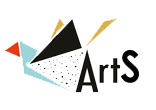Cloud computing is a quickly developing technology that numerous associations are implementing to empower their digital revolution. According to the most recent Gartner report, the cloud tech services market is anticipated to become 17.3% ($206 billion) in 2019, up from $175.8 billion out of 2018 and by 2022, 90% of associations will use cloud services.
In this day and age, Cloud technology is a drifting trendy expression among businesses. It gives energizing new chances to organizations to contend on a worldwide scale and is reclassifying the manner in which we work together. It empowers a client to store and share information like applications, documents, and more to remote areas. These highlights have been acknowledged by all entrepreneurs, from start-ups to settled associations, and they have just begun using cloud computing.
Cloud computing is blasting and there are numerous patterns to be talked about. It had bewildering development a year ago and is anticipated to break its very own record in the following years.
Nowadays it’s practically difficult to discover an association that doesn’t depend completely on cloud services. Regardless of whether it’s an application, working frameworks, databases, web servers, IP addresses or virtual LAN’s – the cloud appears to offer everything.
Cloud Computing Trends
Cloud computing is here to stay and so we have gathered a list of latest trends for you which you should follow:
- Serverless Computing
Some portion of the development in cloud computing has seen the ascent in prevalence of serverless computing. In early cloud development, servers were leased by server space that was foreordained. Then comes a serverless model, which highlights a typical structure that utilizes a “pay-as-you-go” structure. These plans are progressively adaptable and enable organizations to have more power over their cost on cloud hosting. With organizations like Amazon and their AWS model, this structure will keep on inclining upward.
- Artificial intelligence Infusion
AI hit the standard in 2018, with pretty much every significant cloud service provider mixing smart capacities into their item suites. In any case, it’s the rising AI advancement stages, abstracting designers from complex AI structures that call for talented information researchers, that will bring that pattern down the natural way of life this year.
ISVs and custom enterprise software developers, engaged by the huge cloud suppliers, will include knowledge any place they can—conveying over their portfolios chatbots, search engines, analytics tools, voice-empowered interfaces, and mechanized security and management services.On the equipment side, that implies GPUs will duplicate in pretty much every computing condition.
- Containerized Deployment and Leaner Overall DevOps
It resembles a conscious circumstances and logical results connection among microservices, and functional codes later facilitated over ceaselessly improving cloud infrastructure. Improvement of portable applications and afterward organization has turned out to be incredibly lightweight with full stack advancement and new age programming languages like Python, Flutter and React.
It is due to the birth of serverless computing that is enabling DevOps authorities for the containerized arrangement of their applications and practice microservices design at its best The advent of DevOps cloud computing, you can rapidly move to a low latency state, where designers and cloud administrators are frequently one and the equivalent—or if nothing else they’re on a similar page.
- Service Mesh
The cloud has introduced a period wherein most new applications appear as smaller scale administrations. Rather than their monolithic forerunners, cloud-local applications are worked as interconnected containers. What’s more, designers executing that engineering are presently finding the estimation of an assistance work—a rising innovation that associates, finds, screens and confirms correspondences between containerized smaller scale administrations running crosswise over situations.
Istio, a project coming from a partnership of Google, IBM and Lyft, is driving the charge, deploying its 1.0 release toward the finish of last July. Be that as it may, such a large number of open source administration work activities are coming on the web that it’s getting to be hard to monitor them all.
In 2019, service mesh is predicted to become an indispensable part of enterprise application environments.
- Expanded Mobility as a Global Standard
Corresponded to the expansion of “digital locals,” mobility will turn into the main necessity to pull in top ability and hold loyal representatives. Employees that have been familiar with “Bring your own device” arrangements will generally expect this as the standard, notwithstanding the capacity to deal with the go from anyplace at whenever. Cloud will keep on and progressively be utilized as an empowering agent for meeting the worldwide versatility desires for its employees and clients.
- Edge Computing
Edge computing is simply actuated by the developing pattern of IOT-based applications and mechanical use for niche based requirements. Edge computing is the act of handling information at the site of gadgets that establish an immense interconnected system of IoT gadgets.
Prior, the information was put away and handled on a centralized data processing warehouse. In any case, the present day circumstance is a ton unique and undertaking administrations are hoping to decentralize information handling that process and advance portable computing for increasingly fundamental roads of innovation.
It vows to appear with an expansion in the quantity of services. It is for the most part a direct result of quick preparing and profoundly productive cloud arrangements that help sizeable committed transfer speed for transmission of information and speedier data through the hubs.
- Hybrid and Multi-Cloud Solutions
Hybrid Cloud will turn into the predominant plan of action later on. For associations, the open cloud can’t be a solid match for all sort of arrangements and moving everything to the cloud can be a troublesome errand as they have certain prerequisites. The Hybrid Cloud model offers a progress arrangement that mixes the current on-premises framework with open cloud and private cloud services. Subsequently, associations will have the option to move to the cloud technology at their very own pace while being viable and adaptable.
Multi-Cloud is the following stage in the cloud development. It empowers clients to control and run an application, remaining task at hand, or information on any cloud (private, public and hybrid) in view of their specialized prerequisites.
Cloud is not restricted to any specific operating systems. You can use Microsoft Azure for Windows OS, you can also use Linux cloud computing services. However, get Linux cloud computing certification or at least learn how Linux works online to be able to manage it professionally. One of the main advantages of cloud is the flexibility it provides to everyone.







